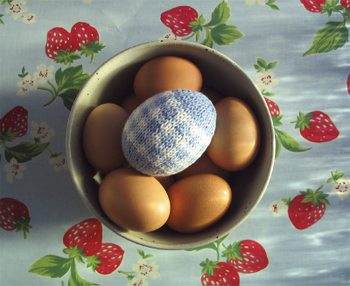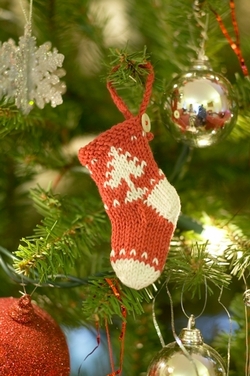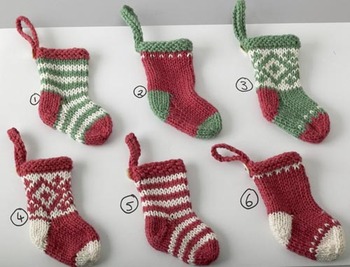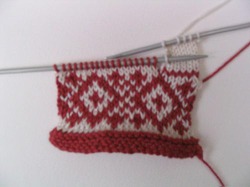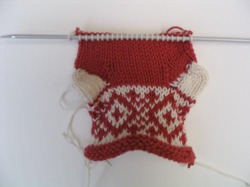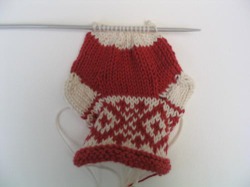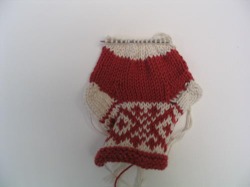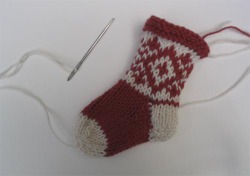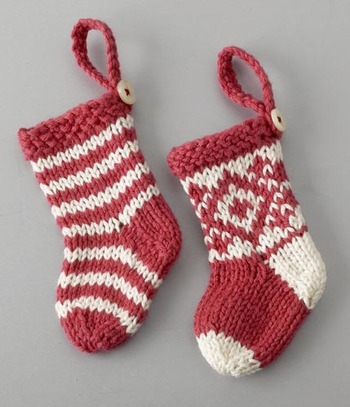itty bitty dress
February 08, 2013
This is a pattern to make a dress for a very tiny toy (see here).
It can be made from scraps of yarn - sock yarn or 4ply is best. In order to make it fit, please use the same needle size that you used to make your mini bunny. For instance, the mini bunnies above were knitted from Debbie Bliss cashmerino aran yarn on 3.25mm needles and so I've used 3.25mm needles for the dresses.
Cast on 28 stitches, leaving a tail of around 6 inches for seaming up the back of the dress at the end.
row 1: knit
row 2: knit
row 3: knit
row 4: purl
row 5: knit
row 6: purl
row 7: knit
row 8: purl
row 9: knit 2, (k2tog) 12 times, k2 (16 stitches)
row 10: purl
row 11: knit 4, yfon, ssk, knit 4, k2tog, yfon, knit 4
row 12: purl 4, purl into back of next stitch (leaving an eyelet for the arm hole), purl 6, purl into back of next stitch (leaving another eyelet for the arm hole), purl 4 ( 16 stitches)
row 13: cast off knit wise
Cut the work from the ball leaving a tail of around 8 inches. Using a fine crochet hook (around 2mm) make a chain of 5 stitches using this tail and join it back to the start point with a slip stitch to make a small loop. Sew a tiny button on the opposite side as a fastening for the dress.
I use micro buttons like these:
Weave the remainder of the cast off end along the edge to the point of the row 9 decreases and leave the end hanging for now. Re-thread the needle with the cast on edge and use it to close the seam at the back of the dress with mattress stitch. When you reach the shaping on row 9 tie both ends together and weave along the inside of the seam before trimming off excess.
And there you have a teeny tiny dress for a bunny or a bear.
Abbreviations:
K2tog: knit 2 stitches together
YFON: Yarn forward over needle - makes a stitch. Start with the working yarn at the back of the work, bring it over the top of the right hand needle to the front and back under the right hand needle again to the back so making a loop them work the next stitch as indicated in the pattern.
SSK: slip, slip, knit. Slip a stitch (as if to knit it) to the right-hand needle, slip a second stitch in the same way, slip both stitches back to the left-hand needle and knit together through the back loops.
Copyright © Julie Williams 2013.



















